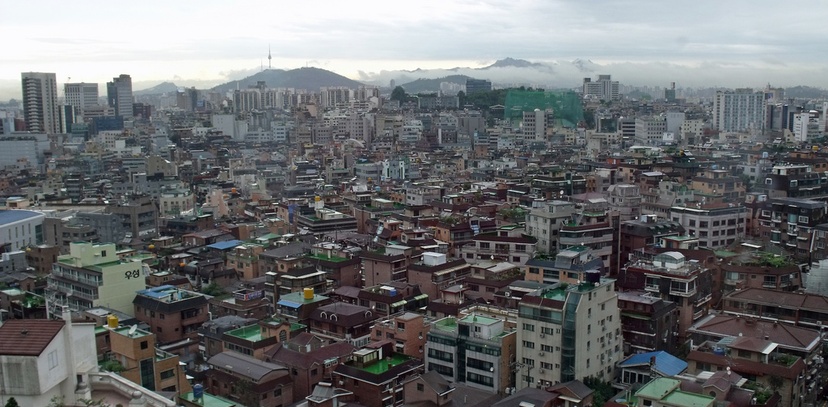
The rate of change of Asian mega cities dwarfs the Europeans and Northern American experience. In South Korea, urban development in the capital Seoul is characterised by the replacements of older neighbourhoods with acres of anonymous looking new apartment blocks. But at the same time neighbourhoods are flourishing in many of the older 'hanoc' areas - often called urban 'villages'.
Visiting Korea for the first time i felt a tension between the pride in its community capacity and enterprise that is such a feature of the hanoc villages, and the spectable of growing numbers of seemingly endless developments of new off white, almost identificle apartment blocks (mainly distinguished from each other by the numbers and names painted on the sides in very large letters).
The City's redevelopment is rapid. In June 2011 an estimated 50 neighbourhoods were in the process of being bulldozed. Population density is already high - over twice that of New York and eight times greater than Rome. Over three quarters of South Korea's population live in cities and there are more cars per mile than anywhere else in the world - twice as many as the UK.
At the very local level the future of Seoul's urban villages is contested. Emotions run high within communities about whether to demolish or rebuild. Although compensation is paid to those who are displaced, the norm is that the bulk of this goes to landlords, not tenants, leaving renters with no home and often not enough money for a new home. High key money execerbates problems, forcing the displaced from inner city areas to cheaper low rent areas far from the city centre. The state safety net is weak and social housing is a tiny percentage of the housing stock, an option for only the very few.
Evictions are often fiercely opposed. In 2009, in the Youngsan-Gu neighbourhood in Seoul five protestors and one police officer lost their lives when a demonstration against eviction turned violent.
But, i was told on a recent visit, the aspirational middle class want to live in new apartments away from the centre, and the rate of building means that these are spreading many miles outside the city centre.
A very different picture emerges in the older 'hanoc' neighbourhoods of traditional single story housing, built in the first decades of the twentieth century. In these areas city policy has allowed, even encouraged, neighbourhoods to thrive. In areas like Bukchon in the North of the City Centre and songmisan, community activism is thriving, In Songmisan there are social enterprise cafes, community run daycare and schools, and flourishing community theatre. The place is buzzing with an energy that many Western cities would envy. For Korean urban policy the approach is seen as radical, and is being replicated in other cities where there are traditional villages.
The approach originated from a concern to conserve the nations heritage. I was told stories of how, in the City of Jeon-Ju, when the first policies to oppose redevelopment of a big area of Hanoc housing were introduced over a decade ago, the then-poor local community opposed the blocking of redevelopment, fearing it would cut off options for future prosperity. Now it is a well-kept affluent looking area of bustling restaurants. Debates continue about the value of existing communities versus the attractions of modernisation.
But Seoul, like every other city, includes areas that are neither old nor new, not historically significant but functionining neighbourhoods, home to businesses and communities in the same way as the Hanoc neighbourhoods, but was told that this was as yet a step too far for Seoul's urban policy. I also wondered about the vast areas of new tower blocks that also will be homes to hundreds of thousands, and how these new areas could become neighbourhoods which give residents a sense of belonging and neighbourliness, amidst the anonymity that is a feature of urban living throughout the world.
Seoul'd newly elected Mayor, Mr Woon-Son Park, has a powerful track record in promoting inoovation, citezen empowerment, social enterprise and of developing many new ideas in his former job running Seoul's Hope Institute. In the run up to his election he promoted community ownership and self-determination It will be fascinating to see his impact on Seoul's approach to urban development, and whether this leads to wider state support for community empowerment and self-determination, beyond the city's historic core.
Written by Nicola Bacon, co-director of Social Life, in January 2012.